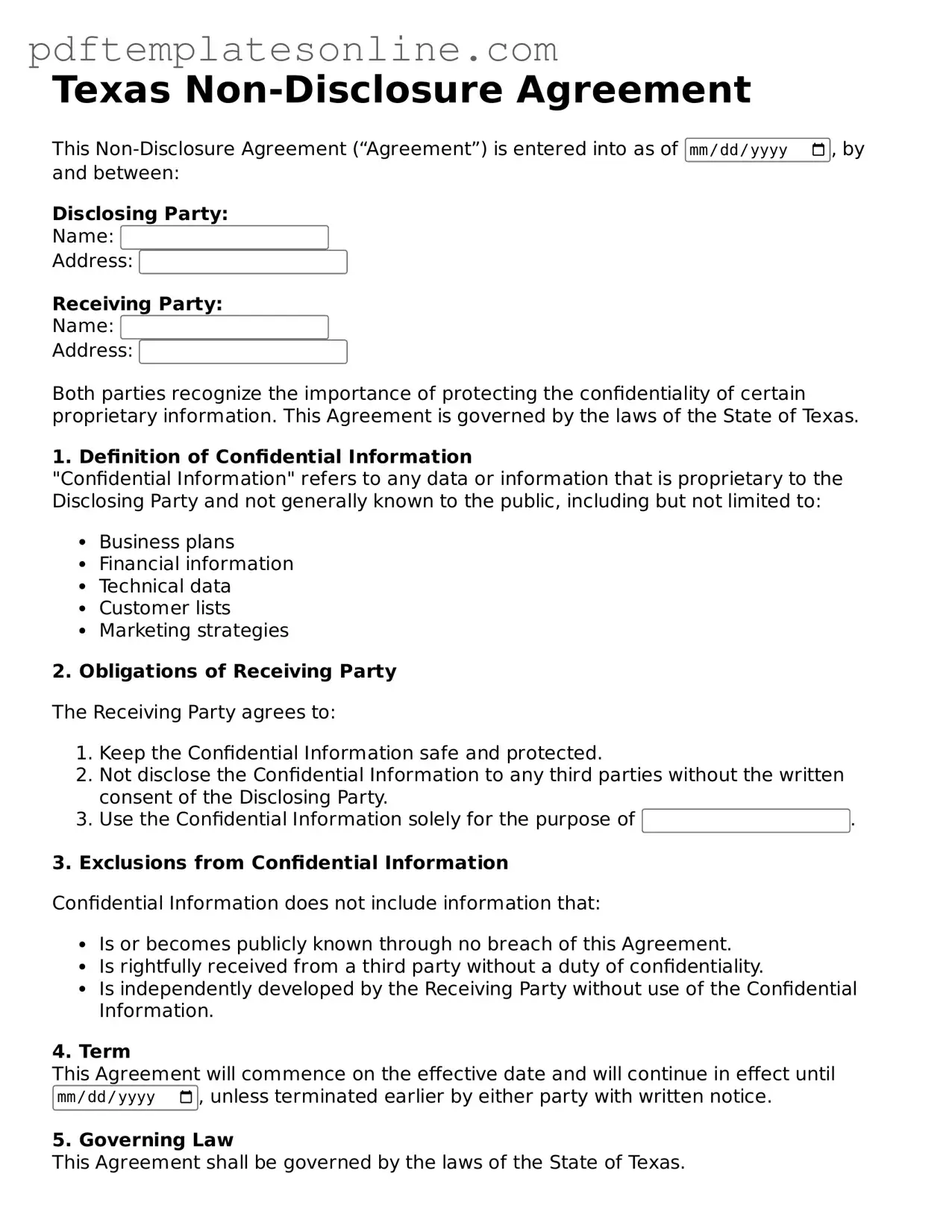When individuals fill out the Texas Non-disclosure Agreement (NDA) form, several common mistakes can lead to confusion or legal issues. One frequent error is failing to clearly identify the parties involved. It is essential to specify who is disclosing the confidential information and who is receiving it. Omitting this information can create ambiguity and weaken the enforceability of the agreement.
Another mistake is not defining the term "confidential information" adequately. This term should encompass all relevant data that the disclosing party wishes to protect. Without a clear definition, the receiving party may inadvertently disclose information that the disclosing party intended to keep confidential. This lack of clarity can lead to disputes down the road.
Additionally, many people overlook the importance of including a time frame for the confidentiality obligation. The agreement should specify how long the receiving party must maintain the confidentiality of the information. If this duration is not stated, it may lead to misunderstandings regarding when the obligation ends, potentially exposing sensitive information to unauthorized disclosure.
Some individuals also fail to include the purpose of sharing the confidential information. Clearly stating why the information is being shared helps to limit its use to specific circumstances. Without this limitation, the receiving party might use the information for unintended purposes, which can undermine the trust established by the NDA.
Another common error is neglecting to include the consequences of breaching the agreement. It is crucial to outline what will happen if the receiving party fails to uphold their end of the bargain. This could include legal action or financial penalties. Without such provisions, the disclosing party may find it challenging to seek recourse in the event of a breach.
Finally, individuals sometimes forget to sign and date the agreement. While this may seem trivial, an unsigned NDA may be deemed unenforceable. Both parties should ensure that they have signed the document, indicating their understanding and acceptance of the terms. Taking this final step is vital for the agreement to hold up in a legal context.
